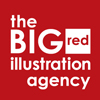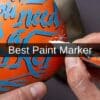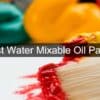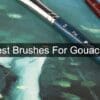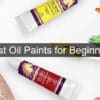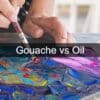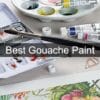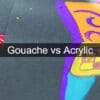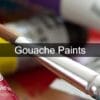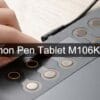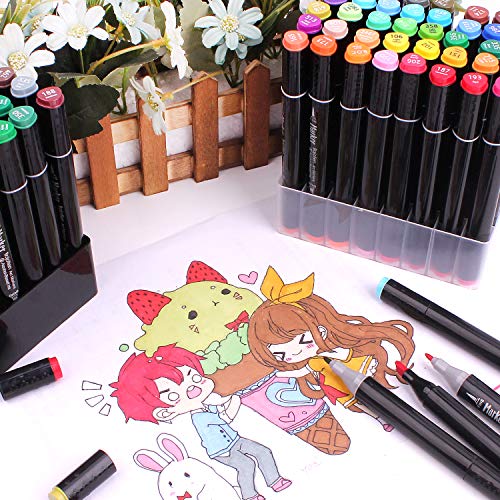
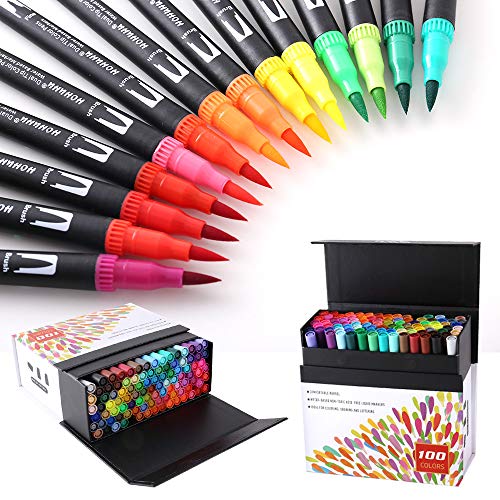
Art Markers.
A guide to buying art markers.
There are so many artist markers out there. How do you know which one is the best for your needs? I’m here to help!
My goal with this guide was not only to provide an informative summary of all things marker but also make it fun and engaging (because who likes boring articles?)
This article will cover everything from tip shape and blending options, brands that offer quality products at different price points, how much they cost in comparison to other art supplies like pens or pencils as well as my personal recommendations based on extensive research.
Hopefully, this information helps get you started off on your artist journey because let’s be honest – we’re never too old or young for a few snippets of advice.
…but remember everyone is unique and your preferred marker will vary based on who you are, how you use the marker, and what outcome you’re after.
Since my school days, I spent 2 years at art college and a further 3 at uni, which resulted in a freelance career in illustration that has been running now for over 20 years… in this time I’ve done a lot of illustrating and experimenting with markers – amassing a collection of 600 + paint markers from over a dozen different brands!
In this Intro to Markers Guide, I’ll pass on everything that I’ve learned about markers. You should read it so you can find the right marker for your needs!
Disclaimer – This website contains affiliate links. If you find the information useful, click on a product link and make a purchase, a small commission will be earned by Big Red Illustration
A quick overview of artist markers
Not that long ago, markers were traditionally a niche tool used primarily by graphic designers and manga artists.
But over time (as the internet became more prevalent in society) many serious artists began to take interest as well because they provide an incredible range of vibrant colors with which one can produce vivid artwork.
Markers are the perfect art supply for anyone who wants to make their projects even more colorful and exciting!
A good set of markers can be used in a wide variety of ways, so they really do provide an incredibly versatile experience. They’re affordable too- which is always good when you want to get as much creativity out of them as possible without breaking the bank on supplies.
Also, markers are a fun and easy way to produce art, perfect for travel sketches or doodles. They can be used on location or outdoors because they dry quickly – markers work well with sketching drawings as well as photorealism, abstract paintings, and everything in between!
Markers have also experienced a huge surge in interest these past few years thanks to the adult coloring trend.
Colorists love the wide range of color choice and convenience of different tip shapes, while some artists enjoy blending colors with their fingers or using markers for more realistic illustrations.
This demand has triggered an explosion in the number of marker products on the market which means that there’s a marker out there for every artist and price point!
The hardest part is wading through all your options but I’m here to help you pick one by providing pros/cons about popular brands like STAEDTLER Lumocolor pens, Prismacolor, Zig Memory System Pens & Marker Sets (known as ZIG Pens), blick art materials and Copic Sketch Markers.
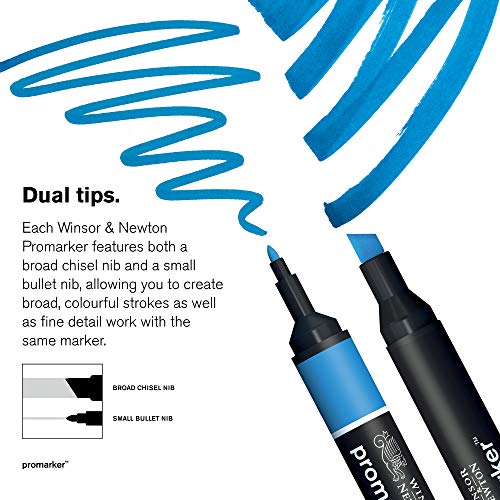
Tip Shapes
What kind of tip do you want? Different brands offer different shapes and sizes, but yours will depend on your preference.
Bullet tips are usually easy for beginners to use because the shape is easier to control; however, they may not be as precise or allow much shading as other nibs can.
They do come in ranges from the broad tip to fine tips, so you’ll have a good range of line widths available. But as with many artists, it’s a personal choice so it may be that dual tip or chisel tips are preferred.
So a good way to start off with coloring pens would be by deciding what type of pen tip you prefer – this impacts how smoothly it moves across the paper while coloring in areas and also affects more advanced features such as being able to shade certain parts darker than others.
Brush Tip / Brush Pens
Have you ever used a brush tip before? They are the most versatile type of pen. Brush pens can be used to draw thin strokes which is great for detailed work and it also allows users to flatten their brush, creating large spaces with variable widths that show off their creativity!
You’ll find many brands offer replacement brushes depending on how long they last.
Chisel Tip
A chisel tip is a versatile tool that can be used for many different purposes. It’s very common in marker brands and has the ability to lay down lots of color with its wide, flat side or provide delicate strokes with its pointy end.
Personally, I rarely use the blunt edge on my markers but this could potentially depend on what your needs are as well as how you want your final product to look like!
Fine Tip
The fine tip pen has a very fine point and as such can be used for fine details and patterning, but it is not practical to use on large blocks of color.
Bullet Tip
The trusty bullet tip is common in lots of cheaper marker sets. It’s a good generalist that does not have many limitations other than the fact it may be tedious to fill large areas with color and detail can be tricky at times.
Double-Ended Art Markers
You have the best of both worlds with double-ended markers! The central reservoir will supply you with a steady flow while your two tips allow for versatility.
A brush tip and chisel tip are common, but there can also be a bullet tipped on one end replacing the brush. This type of marker allows for fine detail as well as the ability to fill large spaces.
Stroke Examples
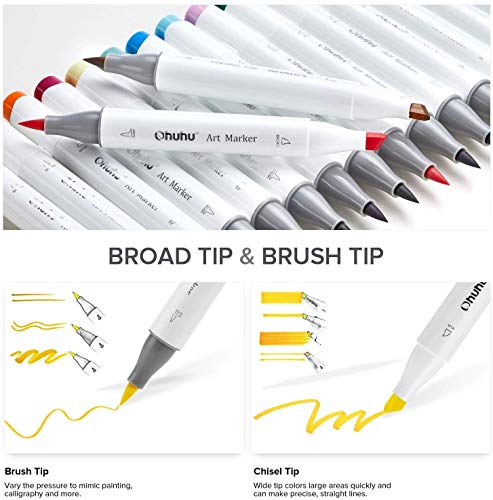
In this article, we explore the many styles and strokes that can be made with a marker. There are so many different tips to choose from when picking out your favorite markers!
In today’s world of artistic expression through coloring books or doodles in our notebooks, it is important to consider what type of art you want to produce before choosing which set of pens will suit your needs best.
As I mentioned earlier there are five basic types: Brush Pen Tips (creates thicker brush-like strokes), Chisel Tip Pens (draws thinner lines), as well as both Fine Tip, Bullet Tip and not forgetting double-ended markers.
You can’t beat the convenience of markers. Not only are they easy to use, but you can mix and match tips as well! For example, if you need a large block color outline or fill in your art with broad strokes just switch out your brush tip for one that has more control like a chisel or fine bullet point marker!
My go-to marker has always been the Copic. I find its head and shoulders above all other markers, covering every aspect of any coloring I ever need. Professional quality for professional artists.
Water-based art markers vs. Alcohol-based art markers
When it comes to choosing your colors and deciding how you want them to look, there’s a wide variety of choices available!
A blender marker can be water-based (water-soluble ink) while other markers use alcohol (solvent based). When looking at the medium that goes on top, we can determine if they’re smudgeable or not because this is another thing that affects their final appearance.
Markers come with either an alcohol or water base – which affects everything from costs to blendability & durability. Let’s take a closer look at the two different types:
Water-based art markers
- In general – much cheaper and can produce many of the same effects
- Fewer colors available
- Often disposable
- Fade resistance is low
- Take longer to dry
- No smell or odour
- Readily available
- Watercolor pens can cause the paper to warp
- Able to blend by adding re-activating with water to create washes.
- Non toxic
Alcohol-based art markers
- Usually far more expensive but worth the extra cost
- More colors available
- Most use refillable ink and have replaceable nibs (save money in the long term)
- Good resistance to fading (but still not lightfast)
- Quick to dry
- They can have an odour to them
- Available at most art supply stores
- Will bleed through cheaper papers
- Transparent, when applying so colors can be blended or over-layed
If you are a child of the 80s, then chances are you have fond memories involving Crayola markers. These water-based pens were not just for making colorful drawings; they also helped document your life with permanent ink and pictures!
..and what’s more, as they were designed for kids they’re made from lower quality dyes that will be easily washable off your hands.
With that said, in the professional world, water-based markers are not just for kids. There is a whole range of artist and hobbyist quality water-based markers that can be used to create artwork as good as alcohol based ones depending on your intended purpose.
Water-based or alcohol-based markers – so which are better?
Artist-grade markers are a big step up from Crayolas, but it’s hard to decide between the alcohol and water based ones. This is why you should do what I did when I first started using them – try both!
It may be helpful to read reviews online about these markers before deciding which one will work best for you, but know that testing out different types of artist-grade marker yourself is the best way to be sure.
…and the good news is, both singles and small sets are available so you can try some without it costing you a fortune!
To Summarise:
Water-based art markers
Water-based markers are readily available in a variety of sets. They can be found at the local dollar store or on Amazon, but if you want to make sure that your water based marker is high quality then check out these amazing artist grade ones!
A downside to this type of pen is they might warp paper when applied too heavily and over time bleed through some pages in coloring books which means careful planning has to go into creating art with them.
The upside? This type isn’t such an issue for hand lettering because it doesn’t require as much ink so there’s less risk involved than other kinds like metallic pens where the non toxic pigment seeps deep down into fibres causing irreversible damage after drying.
Alcohol-based art markers
Alcohol solvent based markers are ideal for artists and coloring books because they blend more smoothly, can create shades or tints, if you want to spend the time. They do however tend to bleed through paper so double-sided coloring is not recommended.
..and a little tip…
If you’re in a store and considering buying some markers but can’t work out if they are water or alcohol based, take the lid off of one. If there is an intense smell coming from it then that would be indicative of its being one of the alcohol solvent based markers.

The Color Selection Range
Did you know that different colors can do a lot for your art? Well, it’s true. The color range of the markers is important because they help you achieve tonal gradation by blending them together.
This way, it makes everything smooth and nice looking! A full Copic Sketch marker set here shown below has 358 in total – a huge assortment from the best markers around. Great to have them all but honestly speaking only about 50 per cent are necessary to create great artwork sometimes!
The Copic Markers Color Chart is a great way to customize your artworks with markers and make them more vibrant (there are of course other brands / other companies that offer the same type of chart).
After you’ve bought some of the right colored markers, it’s time to create your own color chart that will be easy for reference when making a drawing or coloring any picture in particular. Above is the Copic color chart for reference.
Copic Markers
For more info about Copics, including the different products they offer, check out my extensive review of Copic Markers.
No Results Found
The page you requested could not be found. Try refining your search, or use the navigation above to locate the post.
Blending art markers
Creating smooth blends in art can turn a piece of work into something to be proud of. When done well, you could be led to believe it wasn’t even made with markers.
From my experience, water-based markers seem to work better with paper that is not absorbent. Heavyweight multimedia paper may be too much for them and the ink will bleed into one another without a clear distinction between colors.
It’s also been said by some experts in marker artistry that alcohol based markers are made primarily from acid which can react poorly when combined with certain types of papers or produce different effects on each type of surface they’re used on depending heavily upon the blendability factor so it really is going to vary based on what you want out of your final product whether this makes things easier or more difficult for you!
Blending with water based markers
- When you are blending, water-based art markers can leave a streaky appearance and create unintended dark areas when the marker is layered.
- Watercolor blending requires that you use a brush marker to paint the color and then blend out while using water. This is important because if not, it will warp or tear paper which can be costly depending on what type of paper it’s painted on. Using different types of papers such as marker or water-based markers may help avoid this issue but in some cases could cause additional issues with blending techniques for those versions too so always test your materials before you start! (and remember acid free paper is available too and is produced to last the test of time)
- Re-usable markers allow you to make light revisions or washes without ruining your drawing. The downside, though, is that you might accidentally ruin a finished project by getting it wet.
- Water-based markers are unpredictable, but in a way that many watercolorists appreciate. They react with the dye differently than their alcohol counterparts and can be difficult to control at times; however, this is what makes them so unique! If you’ve got experience working with watercolors before then your skills will transfer well when it comes time for blending these two materials together.
- You can also try using water to create a smooth transition in tone and saturation (from light to dark).
Blending with alcohol-based permanent markers
- Alcohol-based markers blend more smoothly, but because they dry quickly and are difficult to remove once dried they can be tough for larger areas. Perfect for smaller ones though!
- As alcohol markers are partially transparent they can be used to create different shades or tones by layering colors on top of one another.
- Blending with alcohol markers is more predictable and easier to replicate, as you know how the colors will interact.
- A downside with alcohol markers is that they do bleed through certain paper. To avoid this from happening, I like to use my Copics on thicker paper like cardstock or marker paper. And please note, if you’re aiming to color in a coloring book that has thin pages make sure you put some scrap paper behind the page so that you don’t color too many layers!
To create a more eye-catching illustration, use your imagination to combine ink pens and colored pencils. For example, if you have some odd colors that won’t blend well with the other colors on your drawing or are streaking in large areas of white space across the paper – it’s time for something new!
Mixing Prismacolor Colored Pencils into these problem spots will smooth out those imperfections while also adding color variation to make use of all this wasted blank canvas space.
There are two ways to blend colors together. One way is with markers, and the other is with a blender pen or brush. Markers come in many different brands – Copic has their Colorless Blender Pens which can be used for blending alcohol-based ink, while Tombow’s N00 Pencil works best on water based pens like Arteza Real Brush Pens, 48 Colors.
…another little tip
You can clean your dirty nib by scribbling on a blank piece of paper. This works for both water-based and alcohol-based markers!
Lightfastness
When you create artworks that will last for a long time, it’s important to pick media classified as lightfast or archival and the ability of these types of materials to resist color fading is called lightfastness.
However, there are times when this classification may not be an accurate representation and they are not as permanent as they may claim.
You’ll have heard this before but the majority of markers are not truly lightfast, which is why they will eventually fade.
Dyes in the marker cause it to be more susceptible to fading than pigment contained in paint or pencils; permanent markers will also fade over time.
Steps to take to slow color fading
- Use the top brands of alcohol-based markers that are more lightfast and contain better quality dyes and are therefore more fade resistant.
- Keep your marker art away from direct sunlight, framed under UV-filtering glass, or store them in archival boxes. The colors will stay vibrant for years to come!
- You may want to think about applying a spray varnish to protect your work. Always test if your artwork will be safe first though by testing on some quick sketches. If the colors don’t run or change and the sheen doesn’t dramatically alter how your drawing looks then feel free to use this process!
…and yet another tip…
I have a few options for preserving my art digitally. If you’re looking to sell it or display your original, I recommend scanning the work at 600 DPI and saving it as JPG files with no compression before uploading them somewhere like Dropbox so that you have a digital copy for life.
You can also create prints of your drawing but be sure not to call these “originals”.
Costs Involved
Alcohol markers are typically more expensive than water-based markers, however, the price increase gets you better quality dyes, smoother blending and color variety. These benefits make it worth your while when it comes time to refill or replace a damaged tip!
Blick prices fluctuate often with discounts and sales. Sharpies are often the cheapest option, but artist-quality alcohol markers, in general, will cost around $3-$7 per marker (less if you buy a set).
On the other hand, most water-based markers can’t be refilled and have to be thrown away when they run dry. But if you’re on a tight budget, there are still some artist quality markers available for as little as $2-$5.
Affiliate Disclosure
In compliance with the FTC guidelines, please assume the following about all links, posts, photos and other material on this website:
Any/all of the links on this website are affiliate links of which The Big Red Illustration Agency receives a small commission from sales of certain items, but the price is the same for you.
www.bigredillustrationagency.com is a participant in the Amazon Services LLC Associates Program, an affiliate advertising program designed to provide a means for sites to earn advertising fees by advertising and linking to Amazon.com & Amazon.co.uk. Pages on this site may include links to Amazon and its affiliate sites on which the owner of this website will make a referral commission.
Cookie preferences: cookie preferences
Adam has made a name for himself in the illustration industry and is a passionate blogger and writer on the subject of art, illustration and graphic design.
His artwork has been featured in countless publications and used for very well-known media projects. As a professional illustrator for over 20 years, Adam's wealth of knowledge and experience enables him to consult and advise artists and illustrators all over the world.

